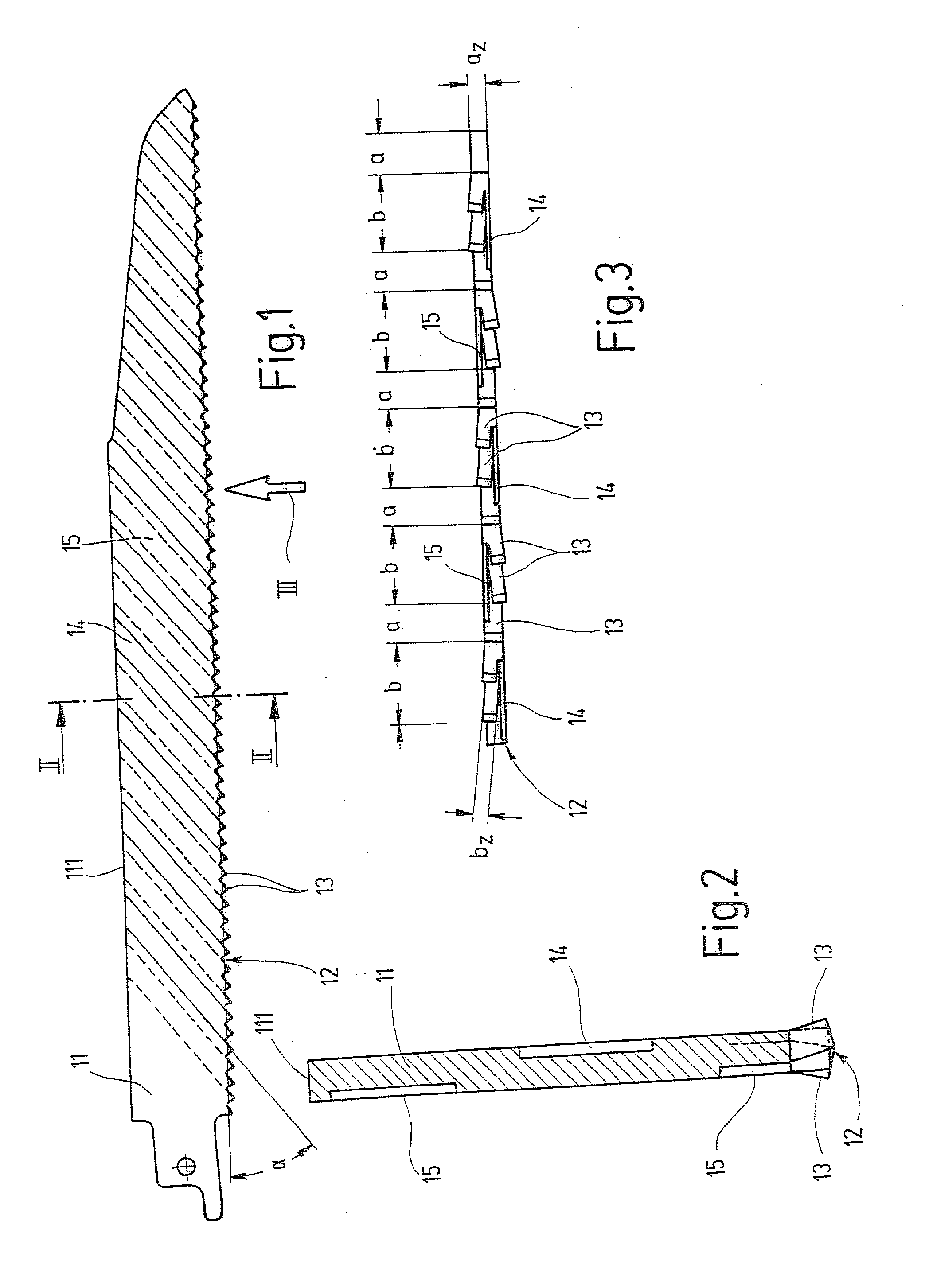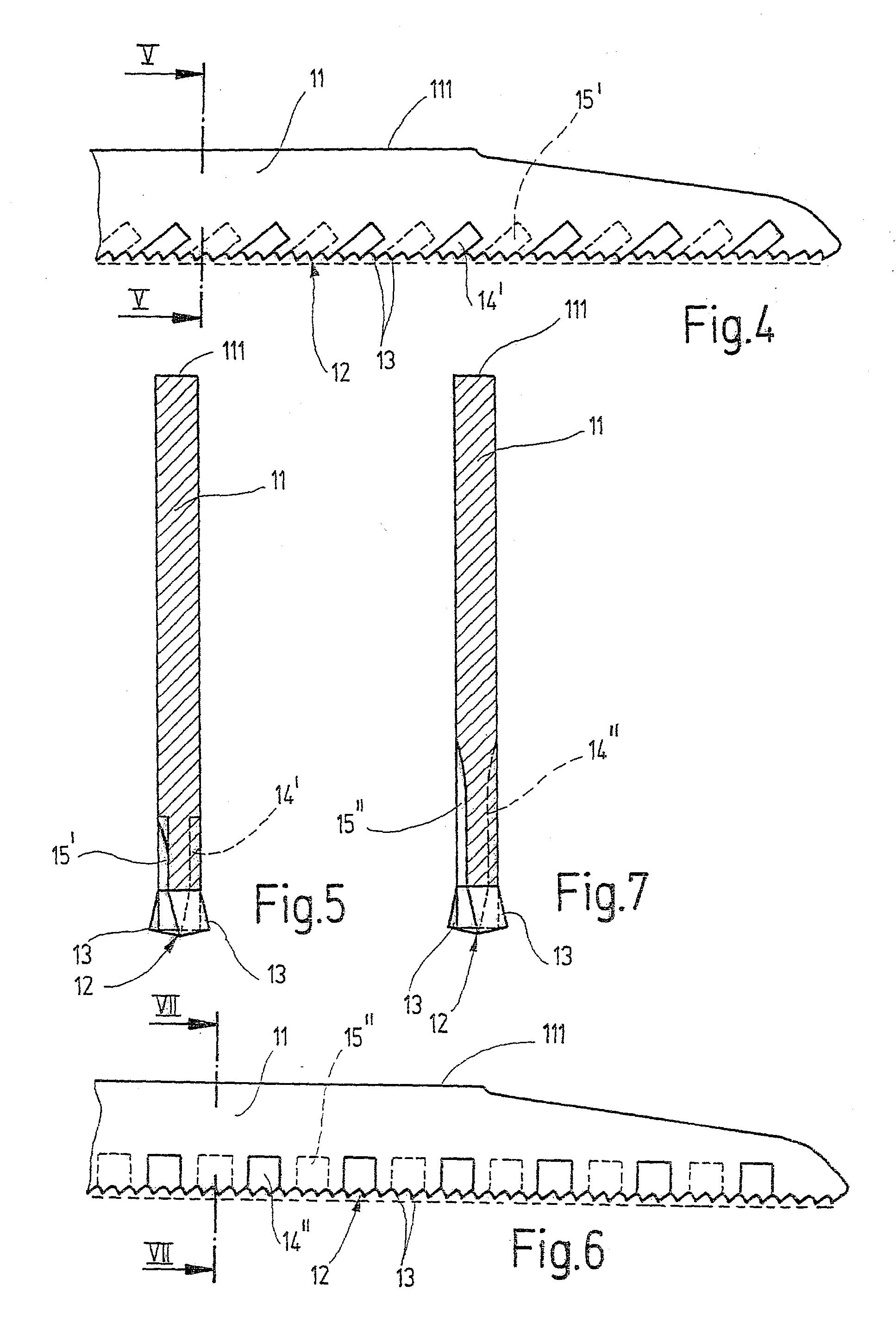Saw blade for hand-held tools
- Summary
- Abstract
- Description
- Claims
- Application Information
AI Technical Summary
Benefits of technology
Problems solved by technology
Method used
Image
Examples
Embodiment Construction
[0016] The saw blade for a power reciprocating saw (saber saw, piercing saw or the like) shown in side view in FIG. 1, as an exemplary embodiment for a power tool in general, has a blade back 11 and a toothing 12, extending along the lower edge of the blade back and comprising many saw teeth 13 lined up in succession. In successive portions a and b (FIG. 3) of the toothing 12, each with an integral number of saw teeth 13, the saw teeth 13 are embodied with the same tooth width a.sub.z or b.sub.z, which however differs from that of the saw teeth 13 in the preceding or succeeding portion b or a, respectively. In the exemplary embodiment of FIGS. 1-3, the portions a of the toothing 12 each include one saw tooth, while the portions b of the toothing 12 each include two saw teeth 13. The tooth width a.sub.z of the saw teeth 13 in the portions a is equivalent to the thickness of the blade back 11, while the tooth width b.sub.z of the saw teeth 13 in the portions b by comparison is smaller...
PUM
| Property | Measurement | Unit |
|---|---|---|
| Angle | aaaaa | aaaaa |
| Width | aaaaa | aaaaa |
Abstract
Description
Claims
Application Information
 Login to View More
Login to View More - R&D
- Intellectual Property
- Life Sciences
- Materials
- Tech Scout
- Unparalleled Data Quality
- Higher Quality Content
- 60% Fewer Hallucinations
Browse by: Latest US Patents, China's latest patents, Technical Efficacy Thesaurus, Application Domain, Technology Topic, Popular Technical Reports.
© 2025 PatSnap. All rights reserved.Legal|Privacy policy|Modern Slavery Act Transparency Statement|Sitemap|About US| Contact US: help@patsnap.com



